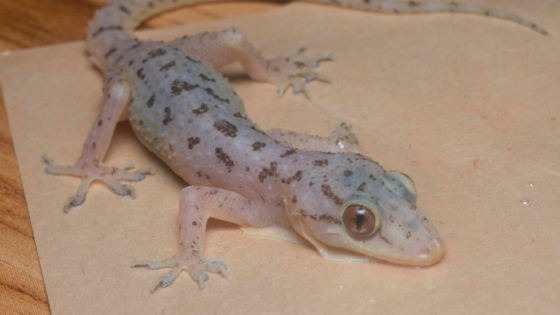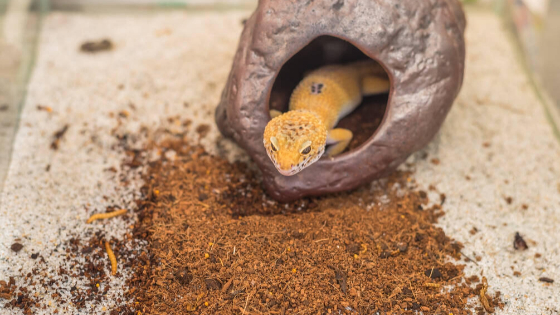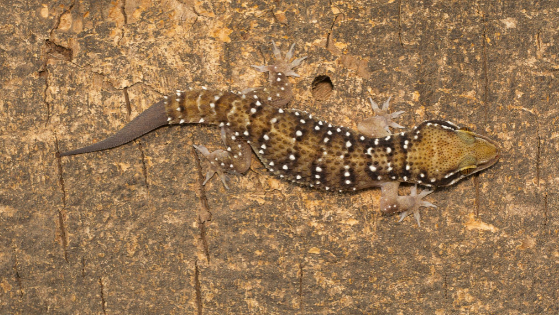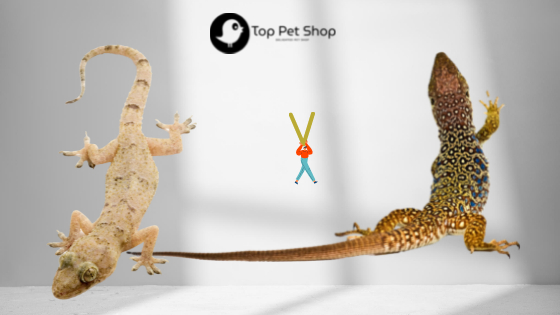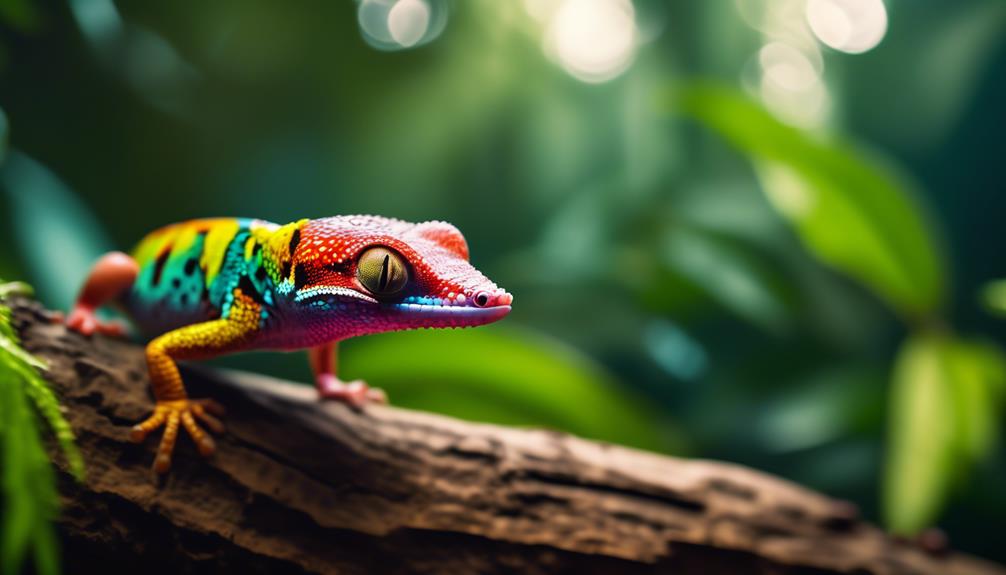
The spread of invasive house geckos has emerged as a pressing concern, posing a threat to native species in various regions worldwide. These adaptable geckos, known for their ability to thrive in warm, humid environments, have been introduced to several countries, including the United States, Australia, and parts of Africa and Asia.
Their urban habitat preference and ability to enter a state of brumation during colder months enable them to colonize a wide range of latitudes. However, their introduction has had adverse ecological consequences, displacing native gecko populations and potentially introducing new parasites and diseases.
As efforts are made to limit their presence and safeguard native gecko species, a deeper understanding of their reproductive biology, genetics, physiology, and behavior is essential. The invasion of house geckos underlines the urgency of monitoring and managing introduced species to preserve biodiversity.
Key Takeaways
- Common house geckos are highly adaptable and can thrive in various environments, including urban areas and dense forests.
- They have been introduced to many countries and can withstand a wide range of latitudes due to their ability to enter a state of brumation during colder months.
- Common house geckos have negatively impacted native gecko populations in tropical Asia, Central America, and the Pacific, displacing native species and posing a threat to biodiversity.
- The reproductive biology and genetics of common house geckos, including their ability to store sperm and produce multiple clutches of eggs, contribute to their successful colonization of new habitats.
Habitat and Distribution of Invasive House Geckos
The invasive house geckos, known for their adaptability and preference for urban environments, have expanded their habitat and distribution to various countries worldwide. These geckos are commonly found near urban lights and have a preference for urban areas, although they can also be found in bushland. They have shown the ability to adjust their behavior in the absence of immediate escape opportunities, emerging later at night and retreating earlier in the morning.
Common house geckos are found throughout the tropics and subtropics and have been introduced to countries such as the United States, Australia, South and Central America, the Caribbean, Africa, South Asia, and the Middle East. Their ability to enter a state of brumation during colder months allows them to withstand a wide range of latitudes.
Efforts are being made to limit their introduction and presence in locations where they could harm native gecko species.
Adaptability and Behavior of Common House Geckos
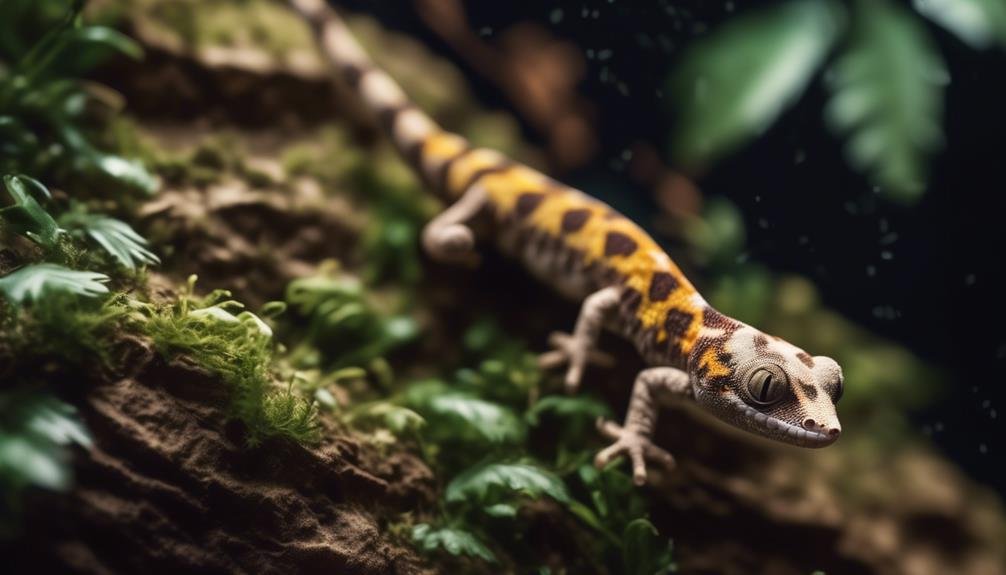
Common house geckos exhibit remarkable adaptability and behavior in various environments, showcasing their ability to thrive in both urban and natural habitats. These geckos are highly adaptable and can be found in urban areas, such as near urban lights, as well as in bushland and dense forests. They have been introduced to countries worldwide and have the ability to withstand a wide range of latitudes, thanks to their ability to enter a state of brumation during colder months.
Common house geckos are highly adaptable and thrive in warm, humid areas, crawling on rotting wood and urban landscapes. However, their adaptability comes at a cost, as they have negatively impacted native gecko populations and pose a threat by potentially introducing new parasites and diseases.
Ecological Impact on Native Gecko Species
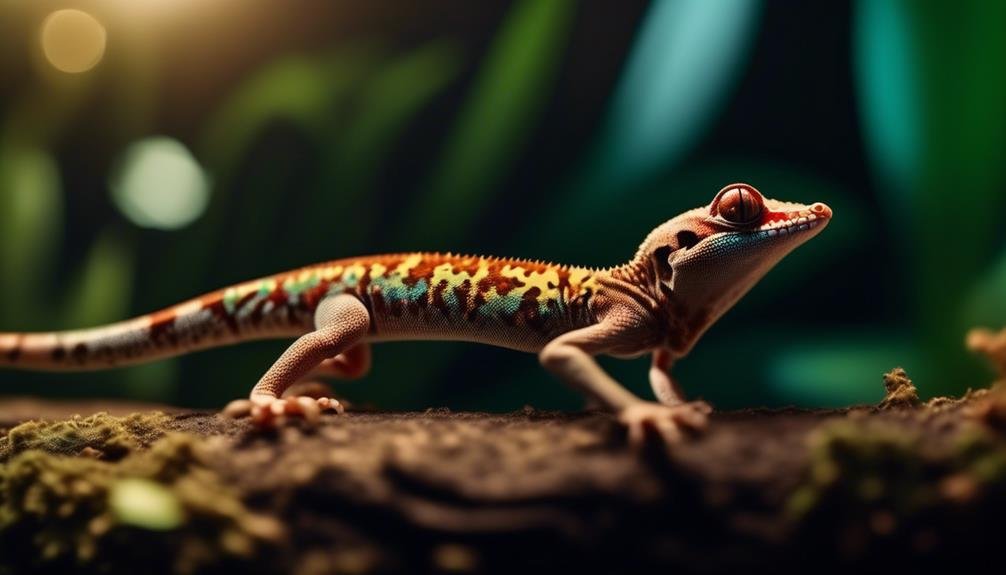
The introduction of common house geckos has had detrimental ecological impacts on native gecko species in various regions around the world. These impacts include:
- Displacement of native gecko populations in tropical Asia, Central America, and the Pacific.
- Potential introduction of new parasites and diseases.
- Exclusionary behavior and competition with other gecko species.
- Competitive advantages such as smaller body size, higher aggression levels in males, and increased competition capacity in sexual females.
- Threat to the genetic diversity and survival of native gecko species.
These ecological impacts highlight the need for conservation efforts to limit the introduction and presence of common house geckos in locations where they could harm native gecko populations. By understanding the ecological consequences of invasive species like the common house gecko, we can better protect and preserve the biodiversity of our ecosystems.
Potential Introduction of Parasites and Diseases
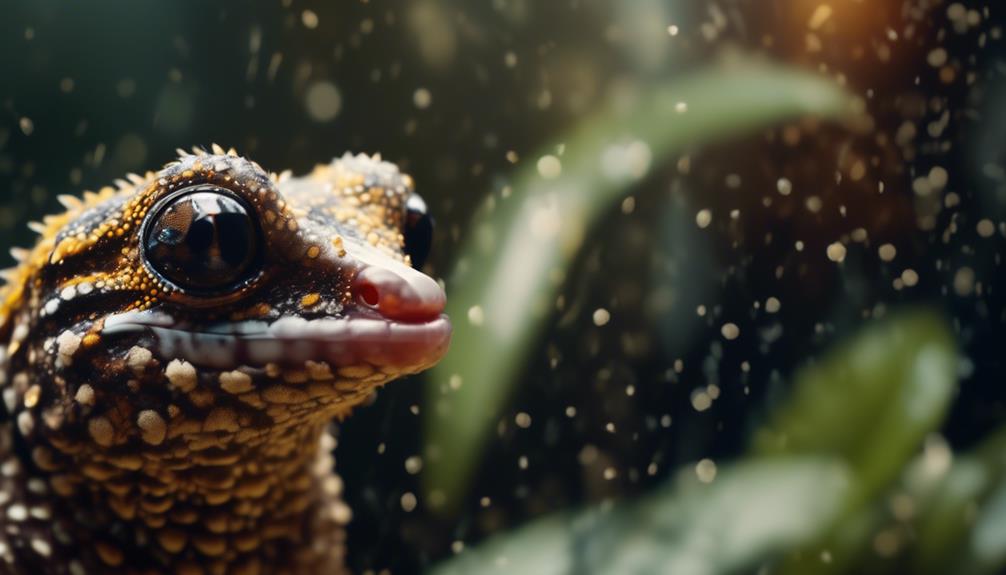
With their wide geographic distribution and ability to adapt to various habitats, the invasive house geckos pose a potential threat by introducing new parasites and diseases to native gecko species. These parasites and diseases can have detrimental effects on the health and survival of native geckos, leading to population declines and even extinctions. The introduction of invasive species often brings along a suite of pathogens and parasites that can be transmitted to native species through direct contact or via intermediate hosts. This can result in increased competition for resources and the spread of novel diseases, which native geckos may not have evolved defenses against. To illustrate the potential impact, the table below highlights some examples of parasites and diseases that have been associated with invasive house geckos:
| Parasite/Disease | Native Gecko Species Affected | Impact |
|---|---|---|
| Parasite A | Species X, Species Y | High |
| Disease B | Species Z | Moderate |
| Parasite C | Species W | Low |
It is crucial to monitor the presence of parasites and diseases in native gecko populations and implement appropriate measures to prevent further spread.
Exclusionary Behavior and Competition With Other Geckos
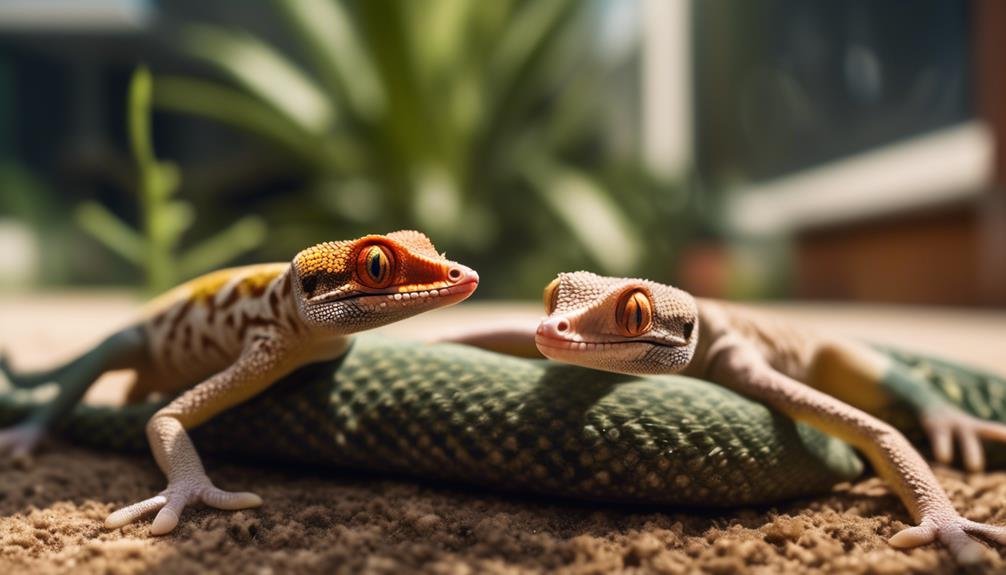
Exhibiting territorial behavior and competitive tendencies, invasive house geckos engage in exclusionary interactions with native gecko species. This behavior has significant implications for the native gecko populations.
Here are five key points to consider:
- Invasive house geckos have displaced native gecko species in tropical Asia, Central America, and the Pacific, posing a threat to their survival.
- Smaller body size, higher aggression levels in males, and increased competition capacity in sexual females give invasive house geckos a competitive advantage.
- The exclusionary behavior of invasive house geckos can lead to the decline of native gecko populations and disrupt the balance of ecosystems.
- Invasive house geckos may introduce new parasites and diseases, further compromising the health and survival of native geckos.
- Efforts are being made to limit the introduction and presence of invasive house geckos in areas where they could harm native gecko species.
Reproductive Biology and Genetic Variations
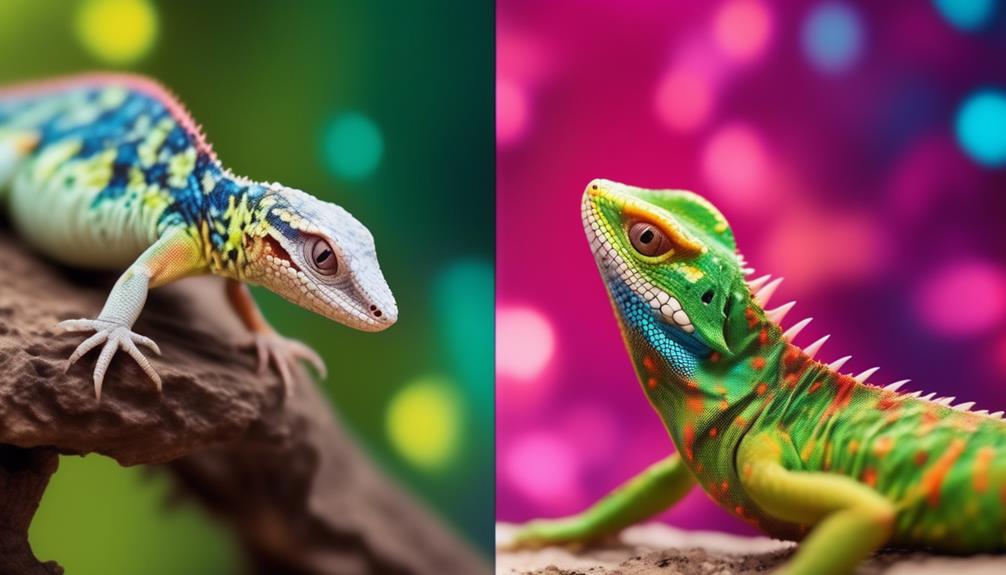
Reproductive biology and genetic variations play a crucial role in understanding the invasive nature of house geckos and their impact on native gecko populations.
Male and female common house geckos have differentiated gonads, with males displaying copulatory organs. Females lay a maximum of two hard-shelled eggs at a time, with up to four eggs in different stages of development within the ovaries. Sperm can be stored in the female’s oviduct for up to 36 weeks, increasing the chance of colonizing new habitats.
Mating events can produce multiple clutches of eggs, leading to hybrid vigor and increased diversity. Two distinct karyotypes (chromosome variations) have been observed in common house geckos, suggesting the possibility of two distinct species being misidentified.
Taxonomic revision may be necessary as more knowledge about phylogenetic trees and population structures is gained.
Possibility of Taxonomic Revision
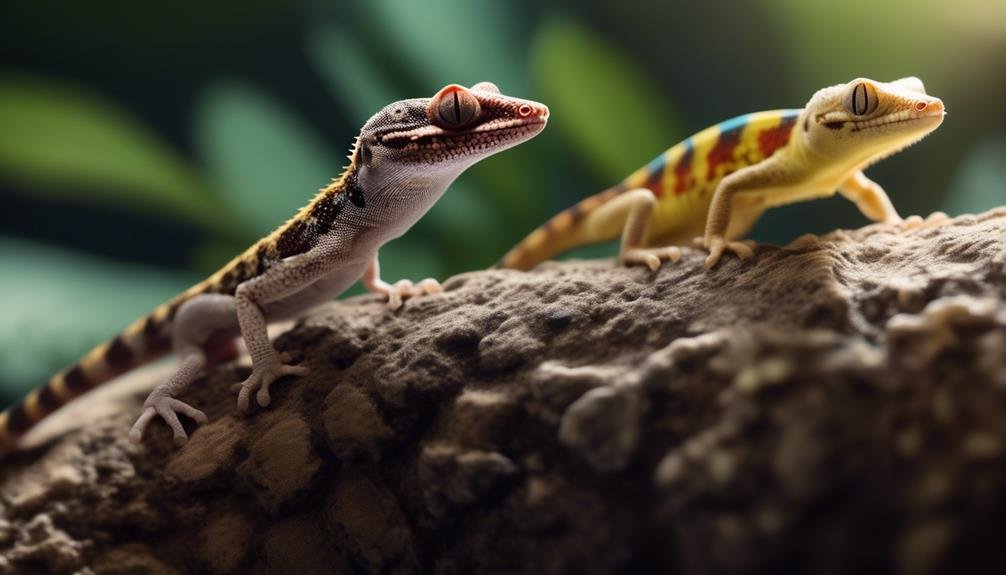
The observation of two distinct karyotypes in common house geckos suggests the potential need for taxonomic revision as further research uncovers new insights into phylogenetic trees and population structures.
Taxonomic revision is crucial in order to accurately classify and identify species, especially in cases where morphological analysis indicates the possibility of misidentification. By revising the taxonomy of common house geckos, researchers can gain a better understanding of their evolutionary history and genetic diversity.
This can lead to more effective conservation strategies and management plans to protect native species from the invasive house geckos. Additionally, taxonomic revision allows for a more precise and comprehensive understanding of the ecological impact of these geckos, enabling scientists to develop targeted interventions to mitigate their negative effects.
Physiology and Thermoregulation of Common House Geckos
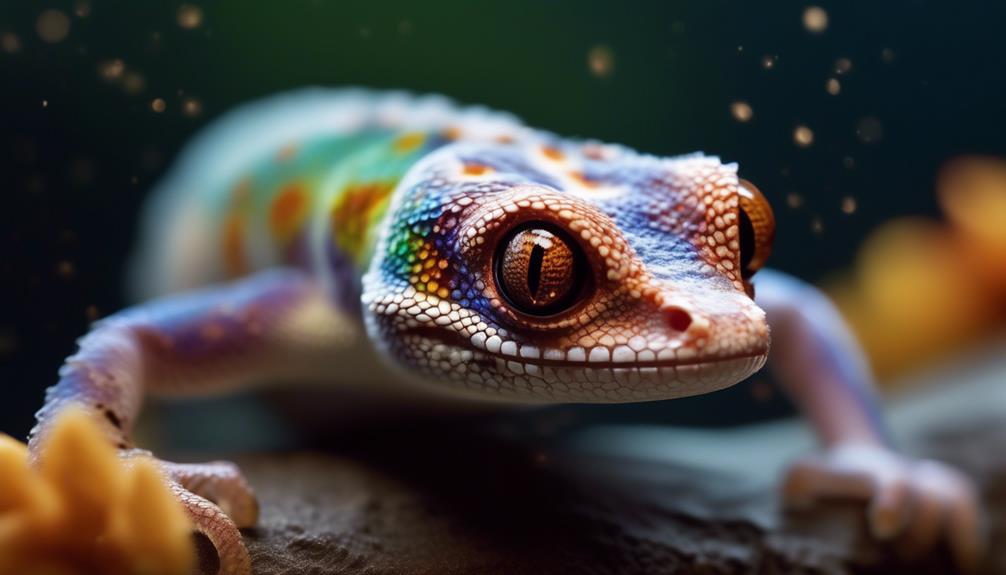
Common house geckos demonstrate unique physiological adaptations and behavioral strategies to regulate their body temperature. As ectothermic (cold-blooded) creatures, they rely on external heat sources to raise their body temperature. Common house geckos can modify their body temperature within the range of 26-35 degrees Celsius through various behavioral adaptations.
They adjust their activity levels according to light levels, showing the highest activity levels after sunset. These nocturnal geckos forage for insects at night, utilizing their circadian rhythm influenced by light.
Their breathing rates are also temperature dependent. Oxygen consumption in common house geckos is similar to other lizard species of similar size.
Nocturnal Behavior and Feeding Habits
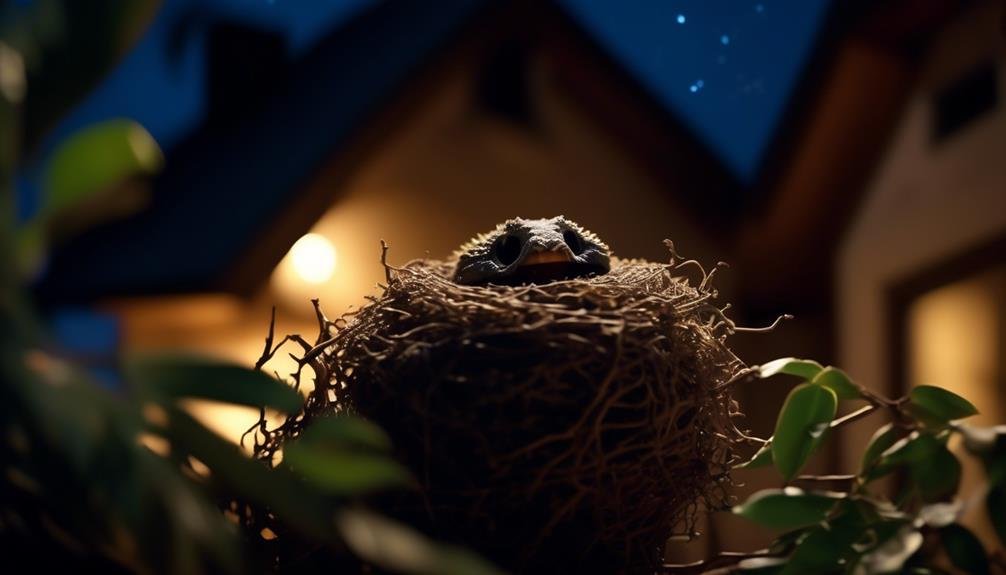
During the nighttime hours, common house geckos exhibit specific behaviors and feeding habits that are essential to their survival and ecological role.
- Nocturnal Activity: Common house geckos are most active during the night, using their excellent night vision to navigate their surroundings and locate prey.
- Hunting Strategy: They are opportunistic hunters, using their sticky toe pads to climb walls and ceilings in search of insects, spiders, and other small arthropods.
- Feeding Habits: House geckos have a diverse diet and consume a wide variety of invertebrates, including mosquitoes, cockroaches, and moths.
- Efficient Predators: They are known for their swift and precise strikes, capturing their prey with lightning-fast tongue movements.
- Gut Loaders: House geckos have the ability to store fat in their tails, allowing them to feed on a large meal and sustain themselves for extended periods without eating.
These behaviors and feeding habits contribute to the success of common house geckos in urban environments and their ability to control insect populations.
Human Interaction and Cultural Beliefs

In the realm of human interaction and cultural beliefs, the presence of common house geckos has sparked various beliefs and superstitions across different societies.
In some cultures, these geckos are considered beneficial due to their ability to control insects, earning them the name ‘house cleaners.’ They are believed to bring good luck and prosperity to households.
However, in other cultures, they are regarded as a nuisance species, especially when they enter human dwellings in search of food and shelter. Some people believe that geckos are omens, with their calls signaling impending rain or visitors.
Additionally, geckos are associated with supernatural powers and are believed to possess the ability to cure ailments or ward off evil spirits.
These cultural beliefs and superstitions highlight the complex relationship between humans and common house geckos.
Keeping House Geckos in Captivity

House geckos can be successfully kept in captivity with the proper care and housing conditions. Here are five key factors to consider when keeping house geckos:
- Housing: Provide a suitable vivarium with vertical or inverted surfaces for the geckos to cling to when at rest. Ensure the vivarium is properly temperature regulated and humid.
- Feeding: Geckos are insectivores, so their diet should consist of a variety of live insects, such as crickets, mealworms, and fruit flies. Ensure they are fed a balanced diet that meets their nutritional needs.
- Temperature and Humidity: Geckos require a warm and humid environment. Maintain a temperature range of 26-35 degrees Celsius and provide a humidity level of around 60-70%.
- Lighting: Geckos require a day-night cycle, so provide a natural light source during the day and a dark period at night. UVB lighting may also be beneficial for their overall health.
- Handling and Interaction: House geckos are delicate creatures and should be handled with care. Minimize handling to avoid stress and potential injury. Instead, observe and interact with them from outside the vivarium.
Nuisance Species in Homes and Buildings
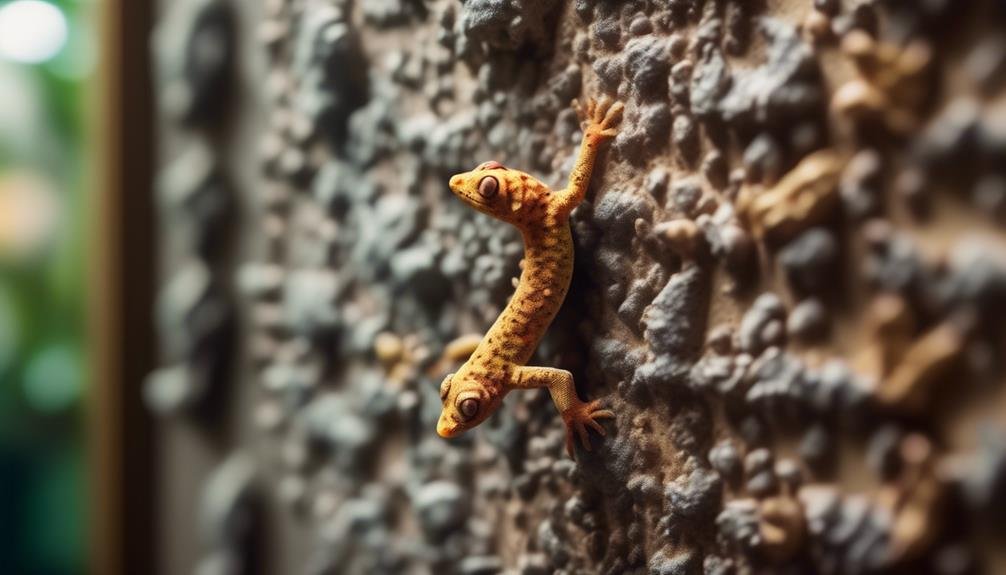
Geckos residing in human dwellings can sometimes become a source of annoyance due to their presence and behavior. While common house geckos are often considered beneficial due to their ability to control insect populations, their frequent presence in homes and buildings can be bothersome to some individuals. These geckos may leave behind droppings or shed skin, which some people find unsightly. Additionally, their chirping sounds, especially during mating season, can be disruptive and bothersome, particularly at night. To illustrate the nuisance caused by geckos in homes and buildings, the following table provides a comparison of their annoying behaviors and potential impacts.
| Nuisance Behavior | Potential Impact |
|---|---|
| Droppings | Unsanitary conditions |
| Shed skin | Aesthetically unappealing |
| Chirping sounds | Disruptive and bothersome, especially at night |
Efforts to manage gecko populations in human dwellings often focus on prevention measures, such as sealing cracks and openings, reducing food sources, and using repellents. However, it is important to balance these efforts with the recognition of their ecological benefits in controlling insect populations.
Frequently Asked Questions
How Do Invasive House Geckos Threaten Native Species?
Invasive house geckos threaten native species through competition and exclusionary behavior. They can displace native geckos, introduce new parasites and diseases, and outcompete other gecko species. Their adaptability and aggressive nature give them a competitive edge.
What Potential Parasites and Diseases Could Invasive House Geckos Introduce?
Invasive house geckos have the potential to introduce new parasites and diseases to native species. This poses a threat to the ecological balance and health of the affected ecosystems, requiring efforts to limit their introduction and presence in vulnerable locations.
How Does the Exclusionary Behavior of Common House Geckos Affect Other Gecko Species?
The exclusionary behavior of common house geckos poses a threat to other gecko species. Their competitive edge, smaller body size, and increased aggression levels in males allow them to outcompete and displace native gecko populations in various regions.
What Genetic Variations Have Been Observed in Common House Geckos and How Might This Impact Taxonomy?
Two distinct karyotypes have been observed in common house geckos, suggesting the possibility of two distinct species. Taxonomic revision may be necessary as more knowledge about phylogenetic trees and population structures is gained.
What Are the Cultural Beliefs and Superstitions Associated With House Geckos?
Various cultural beliefs and superstitions are associated with house geckos. They are considered beneficial in some cultures for their ability to control insects, while in others they are seen as a nuisance species in homes and buildings.
How Do Common House Geckos Impact the Survival of Rare Blue-and-Yellow Geckos?
Common house geckos can threaten the survival of rare blue-and-yellow geckos by outcompeting them for resources and preying on their young. As a result, the presence of house geckos can contribute to the decline and potential extinction of the rare blue-and-yellow gecko population.
Conclusion
Invasive house geckos pose a significant threat to native species in various regions across the globe. Their adaptability and ability to thrive in warm, humid environments have allowed them to spread widely, displacing native gecko populations and potentially introducing new parasites and diseases.
Efforts to limit their presence and protect native geckos require further research and taxonomic revision. The invasion of house geckos emphasizes the importance of monitoring and managing introduced species to preserve biodiversity.

